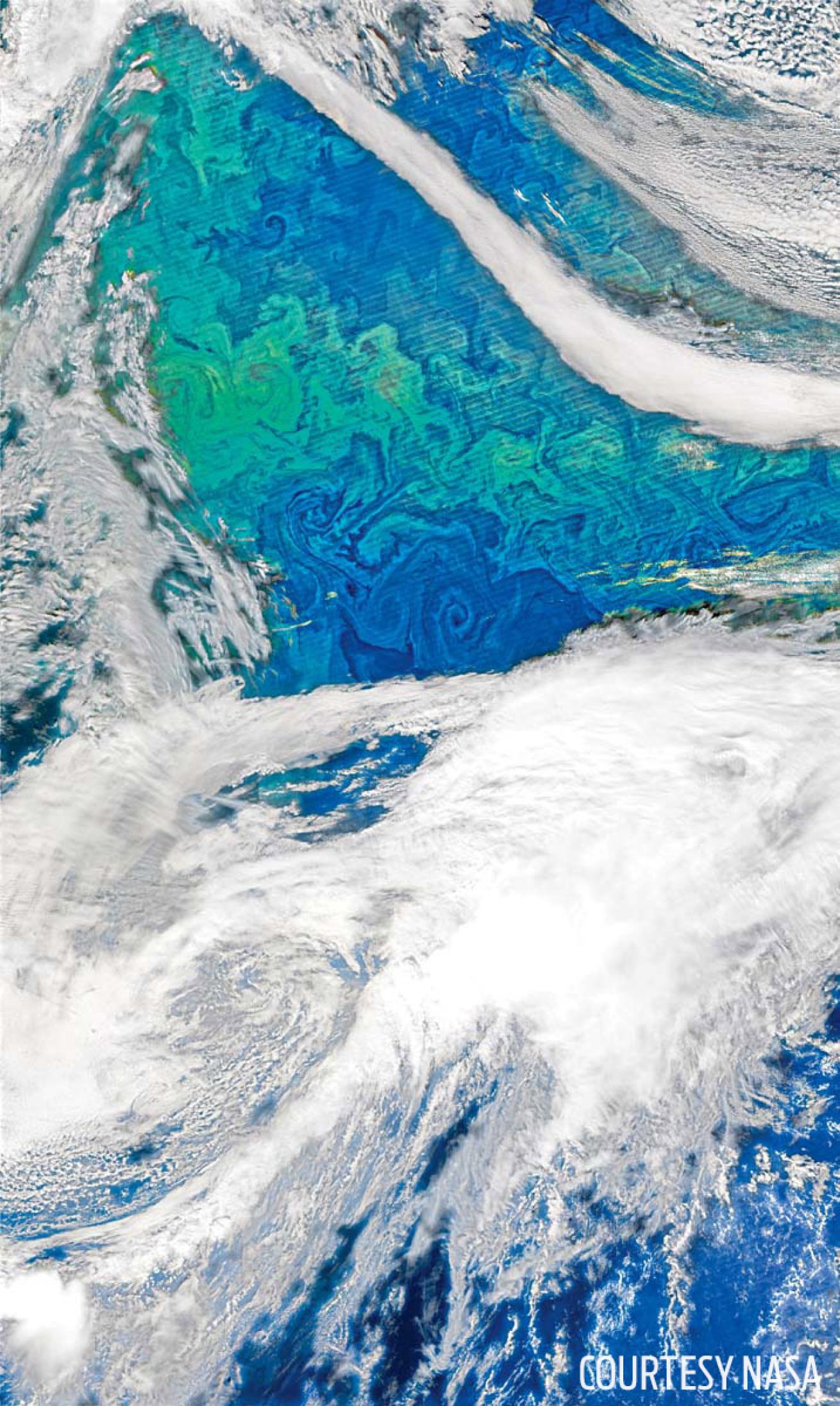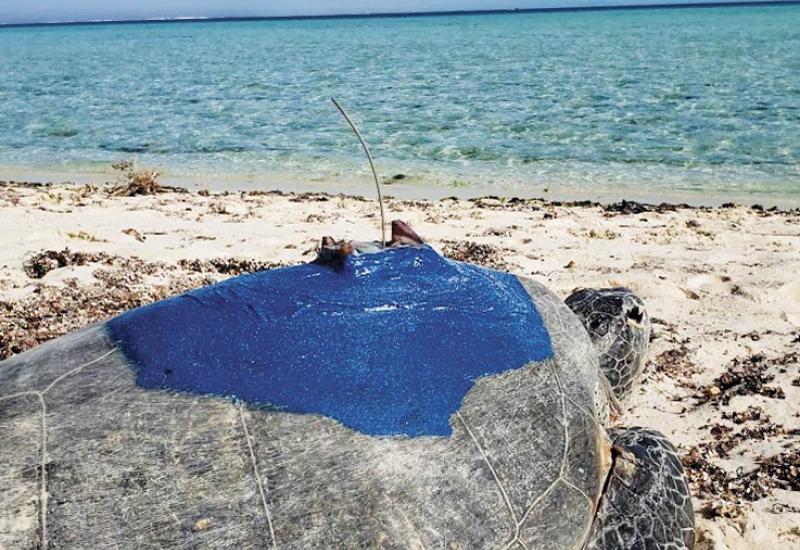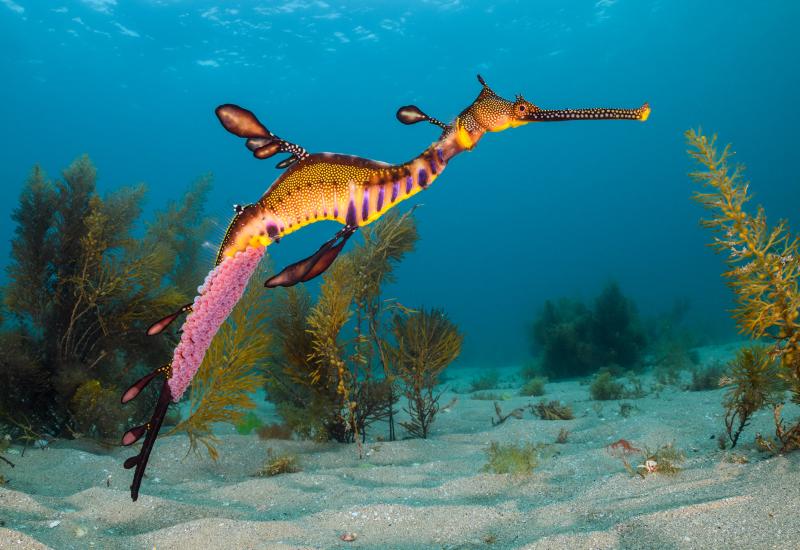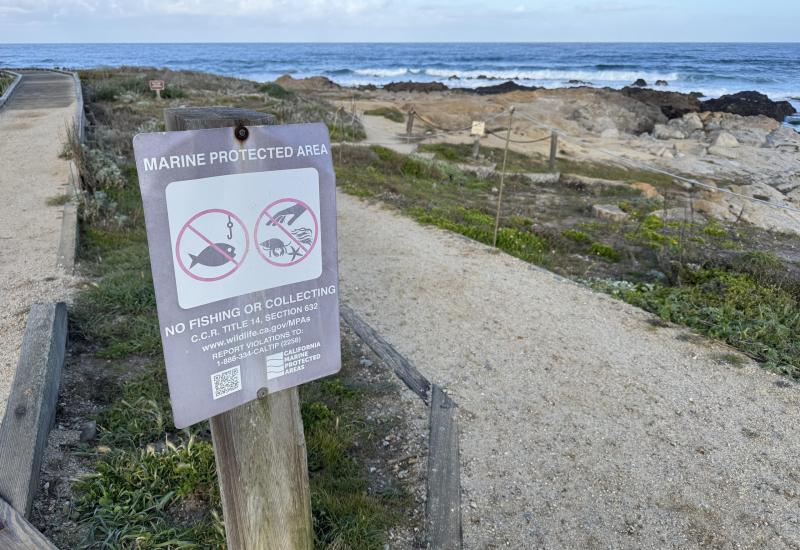NASA Captures Beautiful Image of Phytoplankton From Space

Courtesy NASAThe swirling patterns of blooming phytoplankton in the Atlantic resemble a giant all-natural work of art.
Last fall, when a bloom of phytoplankton turned the north Atlantic into a swirling mass of color, it seemed as if a painter were using the ocean as a ginormous canvas.
Phytoplankton are algae-like microscopic marine plants that are the main food source for several species of whales, shrimp and jellyfish. Like daffodils and broccoli, they require sunlight to grow and so float in the upper part of the ocean. The gorgeous color display in fall is common, but heavy cloud cover usually prevents satellites from snapping photos of the phenomenon.
In September 2015, NASA’s Visible Infrared Imaging Radiometer Suite on the Suomi NPP satellite was able to capture this remarkable image through an unseasonal gap in the clouds.
“The image does a beautiful job of showing the close link between ocean physics and biology,” said Michael Behrenfeld, a phytoplankton ecologist at Oregon State University, in a NASA release. “The features that jump out so clearly represent the influence of ocean eddies and physical stirring on the concentration of phytoplankton pigments and, possibly, colored dissolved organic matter.”
Phytoplankton plays an evident role in the marine ecosystem, but NASA is working to learn more about how its cyclical blooms affect aerosols in the atmosphere and cloud coverage. Just weeks after NASA captured the image below, a group of researchers was in that part of the Atlantic Ocean to take samples as part of a five-year study.
For more amazing views of Earth from space, follow @NASA on Twitter.










